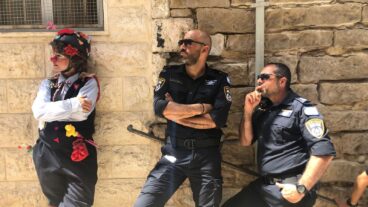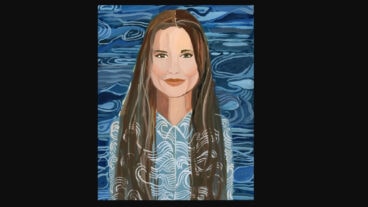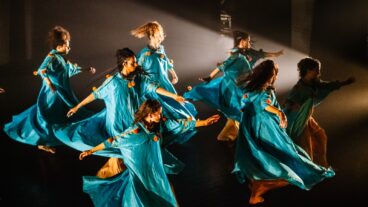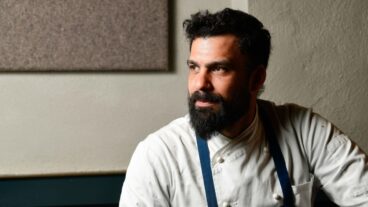Tamir Sher: Ninety percent of the time I don’t carry a camera. I see something, think about it, and return with my tools, ready to work.A children’s house on a kibbutz is an unlikely place to discover a talent for photography, but Israeli photographer Tamir Sher believes his communal upbringing helped him to discover the required perspective to develop his own style.
Sher, whose father gave him a camera at the age of eight, grew up on Kfar Masarik in the north of the country. Despite bad publicity that has since emerged over the policy of kibbutz children living separately from their parents, Sher’s experience was a mixed blessing.
Lack of privacy meant that Sher created what he describes as “internal spaces within himself while among people”. He became the class photographer, and soon realized that this was his path.
Now, many years later, Sher is set to launch his first solo exhibition in the Point Of View Gallery in New York, from November 21 to January 5.
The photographs taken for the exhibition, called After Mars, are filled with the artist’s amazement at discovering a pastoral innocence within everyday urbanity. His focus is upon the light that shows small details, and the darkness that creates shadows and shrouds the subject.
Some of the images feature Sher’s son and his friends exploring and playing within the family garden. These images are not manipulated, unlike his earlier project, Mars, also to be shown in New York, which feature buildings against heavy, digitally enhanced black backgrounds – the Al Aksa Mosque on the Temple Mount in Jerusalem, and a typical Israeli apartment building, viewed from a distance, complete with white solar water heaters on the roof.
“The range of photography these days is all about tools… black and white photography calls for more cleverness, more skill. I’m not a ‘one mind’ photographer – I love all types of photography,” said Sher, speaking from his Tel Aviv studio as he prepared for the exhibition.
Sher’s studio is on the bustling corner of Allenby and Yehuda Levy streets in the center of the city. Looking out of the windows, derelict buildings and dilapidated, crumbling roofs fill the view. Debris from modern life – rubbish bags, broken tables and bird droppings complete the scene. This is the everyday reality that gives Sher inspiration, and from which his eye seeks out detail and the reality he captures.
He credits another unlikely arena – his stint in the Israeli army as a staff photographer – as helping to hone his analytical skills.
“All of my techniques came from my time in the army – all of the materials and processes were new and up to date,” Sher said. “I did forensic and ariel photography, and this fed my mind. I’m extremely grateful for my time in the army.”
Now 41 and a father of two, Sher is committed to city life, and is inspired by what he sees on the streets of Tel Aviv.
“I’m a thinker,” he says of his creative process. “Ninety percent of the time I don’t carry a camera. I see something, think about it, and return with my tools, ready to work.”
Previous projects of Sher’s include Openings; a series of atmospheric images depicting openings of underground urban parking lots, shown in the Herzliya Museum of Art in 2000. Other work includes a striking, yet menacing, series of images of a refinery near Haifa, for which Sher was only given an hour’s access, and shots of the Hiriya garbage dump near Tel Aviv. A current work, featuring a 70-yard black and white photogram is on display at Ashdod Museum.
“I fill these places with light, I want to see the detail [of this garbage mountain], to make something that is horrible, beautiful and glorious,” he said.
Other influences upon Sher include American photographer Ansel Adams and painter Mark Rothko; artists who also emphasized light and dark.
Sher uses a simple digital camera for the color images, but during the interview he pulls out a classic Hasselblad 4 by 4 camera, which he uses for most of the black and white work.
Much of Sher’s photography is on display on his beautifully designed website, to the accompaniment of music by Theolonius Monk. This medium is an important outlet for Sher: he now sells images shown on the site through various dealers in Europe and the US, and it is how the Point Of View Gallery curator Amelie Sourget found Sher and his work.
Sher quotes the Jewish philosopher Walter Benjamin, who said that: “artists must use all the tools at their disposal [to get their message across], but they must learn to do it gently.”
“I teach a lot; almost every day [in Camera Obscura in Haifa]. The first thing I ask of students is to leave the technology aside – understand the camera, but look around and see the world around you. We’ve got everything here, around us. I don’t want the camera to block the students’ brains.”
Sher said he’s very excited by his upcoming trip to the US, his first. “I want to walk the streets of New York, and feel the energy of the place I always dreamed about visiting.
“I’m ready for this exhibition – after all my 34 years in photography, I feel very ready for this development of my career, and I’m feeling the most creative I’ve ever been.” ![]()












